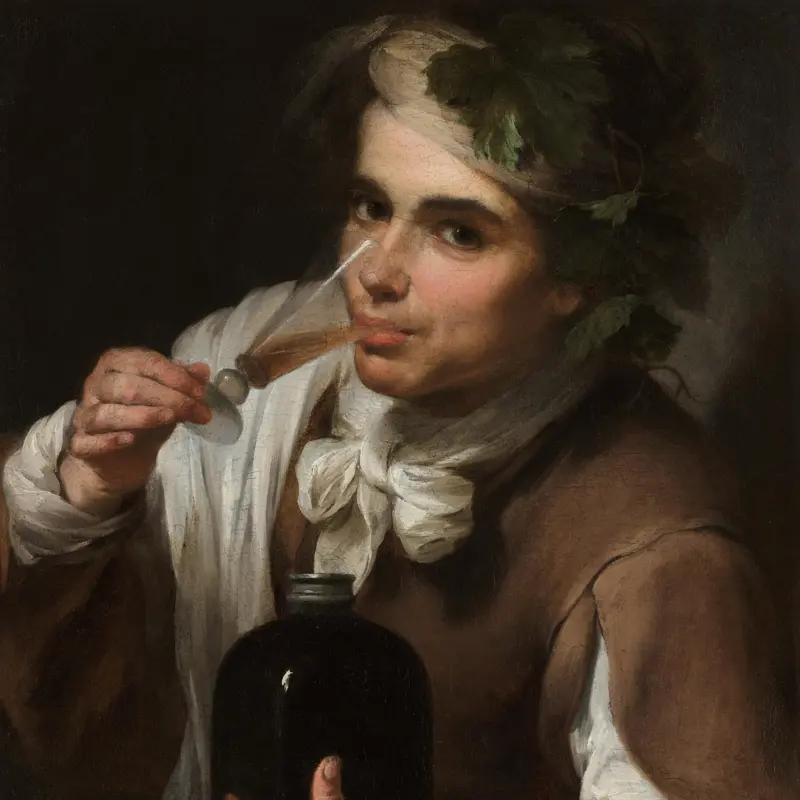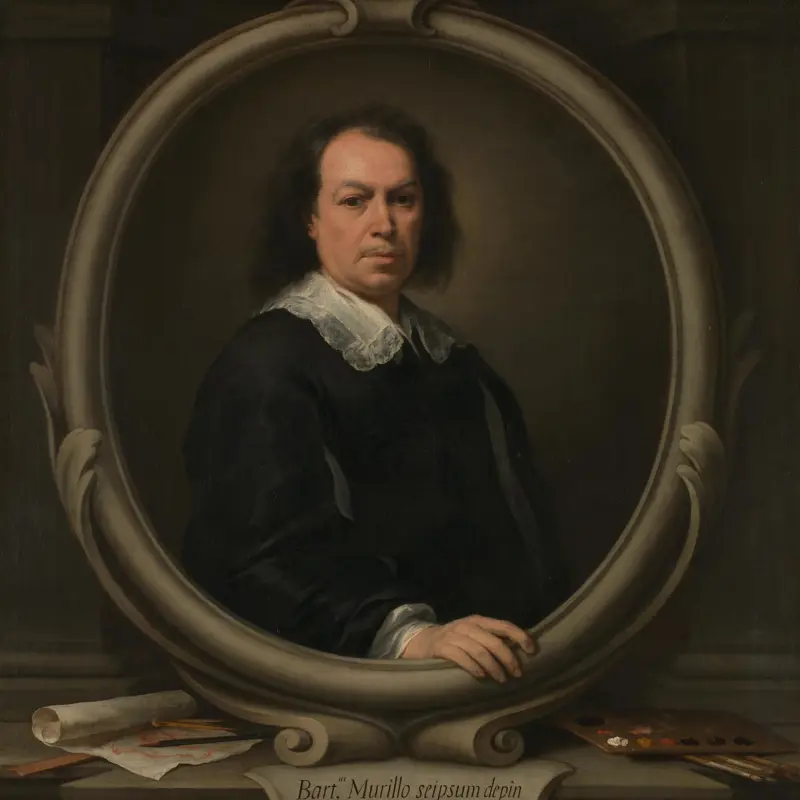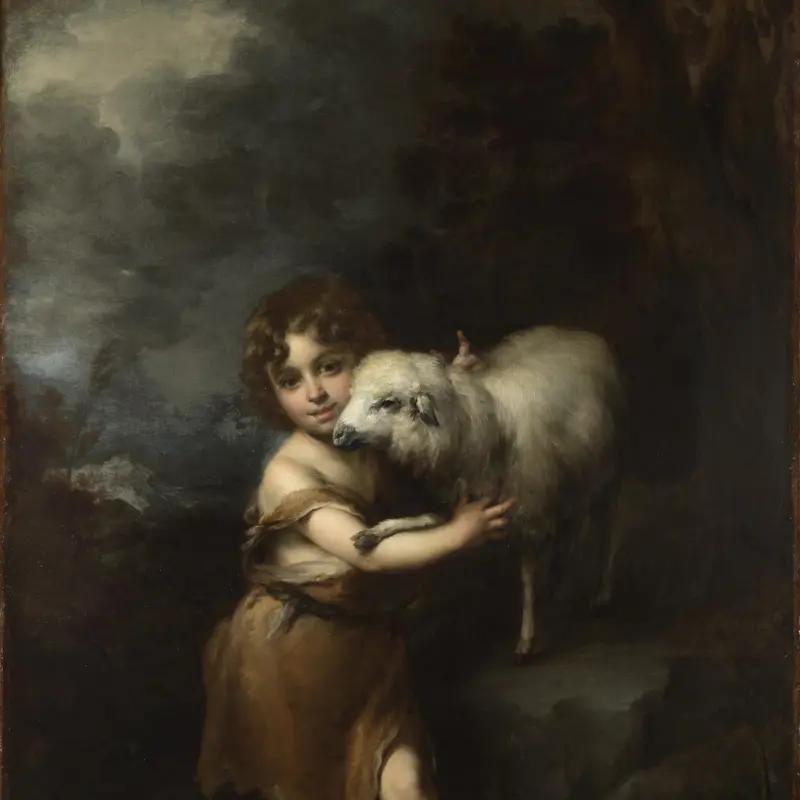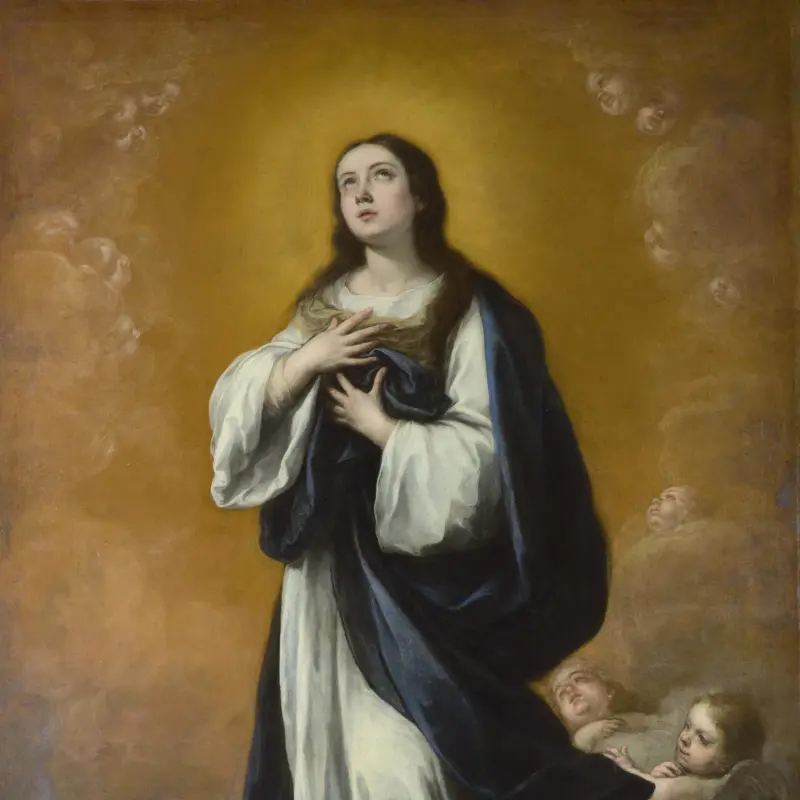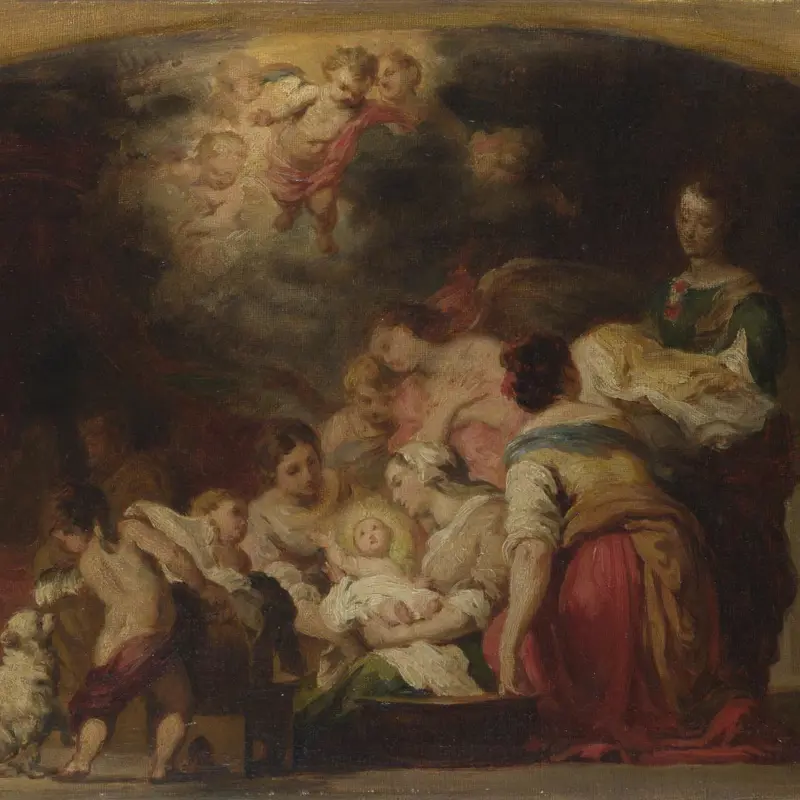Bartolomé Esteban Murillo, 'Saint John the Baptist in the Wilderness', 1660-70
About the work
Overview
Saint John the Baptist is shown within a rugged landscape and wearing a camel-hair tunic, alluding to the simple life he led in the wilderness, as described in the Gospel of Matthew. He holds a reed cross with a scroll coiled around the top. It bears a Latin inscription: Ecce Agnus Dei (‘Behold the Lamb of God’ – the words John spoke on meeting Christ, and a title that refers to Christ’s self-sacrifice in atoning for humanity’s sins).
John is transfixed, looking up towards heaven. He places one hand gently on his chest as he recalls his encounter with Christ. The crop of the composition – just below John’s knees – is unusual, but it is unlikely that the painting has been cut down.
The painting arrived in England, from Spain, in the early 1780s and was particularly admired by the painter Thomas Gainsborough. He bought it in 1787, the year before his death.
Key facts
Details
- Full title
- Saint John the Baptist in the Wilderness
- Artist
- Bartolomé Esteban Murillo
- Artist dates
- 1617 - 1682
- Date made
- 1660-70
- Medium and support
- oil on canvas
- Dimensions
- 120 × 105.5 cm
- Acquisition credit
- Mond Bequest, 1924
- Inventory number
- NG3938
- Location
- Not on display
- Collection
- Main Collection
Provenance
Additional information
Text extracted from the ‘Provenance’ section of the catalogue entry in Neil MacLaren, revised by Allan Braham, ‘National Gallery Catalogues: The Spanish School’, London 1988; for further information, see the full catalogue entry.
Exhibition history
-
2012Murillo and Justino de Neve: The Art of FriendshipDulwich Picture Gallery6 February 2013 - 19 May 2013
Bibliography
-
1785Christie's, A Catalogue of the First Part of the Truly Superb Collection of… Pictures… the Whole Being the Sole and Genuine Property of Monsieur Desenfans, London, 11 May 1785 - 13 May 1785
-
1789G. Dupont, A Catalogue of the Pictures and Drawings of the Late Mr Gainsborough, London, 30ff March 1789
-
1789G. Dupont, A Catalogue of the Pictures and Drawings of the Late Mr. Gainsborough, London, 1789
-
1877Royal Academy of Arts, Exhibition of Works by the Old Masters, and by Deceased Masters of the British School (exh. cat. Royal Academy of Arts, 1877), London 1877
-
1910J.P. Richter, The Mond Collection: An Appreciation, London 1910
-
1912C.J. Ffoulkes, 'Il catalogo mond', L'arte, XV, 1912, pp. 263-80
-
1915W.T. Whitley, Thomas Gainsborough, London 1915
-
1944'Editorial: Gainsborough's Collection of Pictures', The Burlington Magazine, LXXXIV/494, 1944, pp. 107-10
-
1952Maclaren, Neil, National Gallery Catalogues: The Spanish School, London 1952
-
1970N. MacLaren and A. Braham, The Spanish School, 2nd edn, London 1970
-
1978J.A. Gaya Nuño, L'opera completa di Murillo, Milan 1978
-
1980J. Mills and R. White, 'Analyses of Paint Media', National Gallery Technical Bulletin, IV, 1980, pp. 65-7
-
1980National Gallery, 'Pictures Cleaned and Restored in the Conservation Department of the National Gallery, March 1980 - December 1980', National Gallery Technical Bulletin, V, 1981
-
1981D.A. Íñiguez, Murillo. Su vida, su arte, su obra, Madrid 1981
-
1981A. Braham, El Greco to Goya: The Taste for Spanish Paintings in Britain and Ireland (exh. cat. The National Gallery, 16 September - 9 November 1981), London 1981
-
1984D. Sutton, 'Aspects of British Collecting, III.XII: A Wealth of Pictures', Apollo, CXIX/267, 1984, pp. 346-56
-
1988Maclaren, Neil, revised by Allan Braham, National Gallery Catalogues: The Spanish School, 2nd edn (revised), London 1988
-
2001
C. Baker and T. Henry, The National Gallery: Complete Illustrated Catalogue, London 2001
About this record
If you know more about this work or have spotted an error, please contact us. Please note that exhibition histories are listed from 2009 onwards. Bibliographies may not be complete; more comprehensive information is available in the National Gallery Library.


